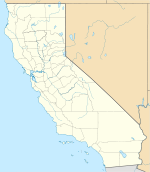Dueling demographers: When will CA’s population hit 50 million?
by CalWatchdog Staff | April 25, 2012 8:29 am
 [1]April 25, 2012
[1]April 25, 2012
By Wayne Lusvardi
When will California’s population “pop” at 50 million persons? Two recent studies conducted by the Population Dynamics Research Group at the University of Souther California and the Public Policy Institute of California differ widely in their conclusions.
The main conclusions of the two studies differ as to the timing that new roads, electric grids, sewers and telecommunications infrastructure may be needed.
USC:[2] “The population slowdown may bring reprieve to a fiscally strapped state under pressure to keep up with infrastructure needs.”
PPIC[3]: “Growth will put pressure on infrastructure.”
PPIC forecasted California would reach 50 million people by 2032. That’s 20 years from now. Its numbers were based on California Department of Finance data from 2007 and updated in 2010.
USC’s forecast is for California’s population to reach 50 million by 2046. That’s 34 years from now. The USC forecast is the first to use data from the 2010 U.S. Census.
| Population 2010 | Year At Which Population is 50 million | Average Population Growth per Year/Yearly Growth Rate | Data Source | |
| USC Study | 37.3 million | 2046 | 352,000 per year 0.8% per year |
U.S. Census – 2010 |
| PPIC Study | 39.1 million | 2032 | 545,000 per year 1.2% per year |
California Dept. of Finance (2007) |
The USC forecast sees California reaching 50 million people 14 years later than PPIC. This would put less time pressure on planners and decision makers to finance and build out public improvements needed to serve a population of 13 million million people. That is about four mega-cities the size of the city of Los Angeles.
Where Would They Live?
The PPIC forecast sees the growth being spread out mostly in the inland areas of the state. That’s different from the central planning policies of the state Legislature in tandem with regional planning agencies that want to steer that growth mainly toward “urban infill” locations in already highly populated areas to alleviate “urban sprawl.” These agencies include the Association of Bay Area Governments in northern California and the Southern California Association of Governments.
Central planners foresee putting one-half to two-thirds of this new population in apartments and condominiums around existing population centers.[4] Historically, California growth has been about two-thirds from single family homes in the suburbs and inland counties.
The USC study does not contain a forecast of the locations where population growth would be the greatest. However, the USC study indicates that most new growth would be from “California born” residents rather than those “foreign born” or “born in other states.”
As suburbs and inland areas are where there are a greater proportion of families, this presumes that growth would be in suburbs and inland areas. Once again, this would run against the mandates of central planners and SB 375[5], the “anti-urban sprawl” bill passed by the Legislature and signed into law by Gov. Arnold Schwarzenegger in 2008. Diverting population growth to “infill” areas of highly populated cities will put greater pressure on water supplies[6] than allowing population to spread to suburbs and inland areas.
Fewer Immigrants?
Concurrently with the release of the USC study, the Pew Hispanic Center issued a report concluding that foreign immigration has come to a standstill[7], and may even be reversing The USC study likewise sees the major reason for slower population growth as a leveling off of foreign immigration.
The PEW study claimed that about 900,000 fewer immigrants have come to the U.S. since 2008 than were expected. That is about 225,000 fewer immigrants per year in the. In the last 40 years, about 12 million people came here, reflecting about 300,000 per year. Half of those foreign born coming to the U.S. were illegal.
But Where Would They Get Water?
The 14 more years to build major infrastructure forecasted by USC would not apply to California’s water situation. California has only about one-half year of water storage[8] in its combined state and federal water systems, compared to about four to 10 years of water storage along the Colorado River water system. Since 2000, environmentalists have diverted five “waterless” water bonds — Propositions 12, 13, 40, 50 and 84 — totaling $18.7 billion[9] mainly for open space acquisitions and environmental studies. That would be enough to build about four to eight major water reservoirs.
Where California’s future population is going to get its water is still in question.
- [Image]: http://www.calwatchdog.com/wp-content/uploads/2011/11/150px-USA_California_location_map.svg_.png
- USC:: http://www.usc.edu/schools/price/futures/pdf/2012-pitkin-myers-ca-pop-projections.pdf
- PPIC: http://www.ppic.org/main/publication.asp?i=900
- one-half to two-thirds of this new population in apartments and condominiums around existing population centers.: http://www.calwatchdog.com/2012/04/18/california-declares-land-war-on-families/
- SB 375: http://www.scag.ca.gov/factsheets/pdf/2009/SCAG_SB375_Factsheet.pdf
- greater pressure on water supplies: http://greeneconomics.blogspot.com/2009/02/interesting-e-mail-on-water-and.html
- Pew Hispanic Center issued a report concluding that foreign immigration has come to a standstill: http://www.nbcsandiego.com/news/local/Migration-Mexico-to-US-Drops-Pew-Hispanic-Reserch-Center-148567645.html
- one-half year of water storage: http://www.calwatchdog.com/2012/04/09/cadiz-creates-water-out-of-thin-air/
- $18.7 billion: http://www.calwatchdog.com/2010/12/27/new-year%E2%80%99s-water-bond-resolutions/
Source URL: https://calwatchdog.com/2012/04/25/deueling-demographers-when-will-cas-population-hit-50-million/